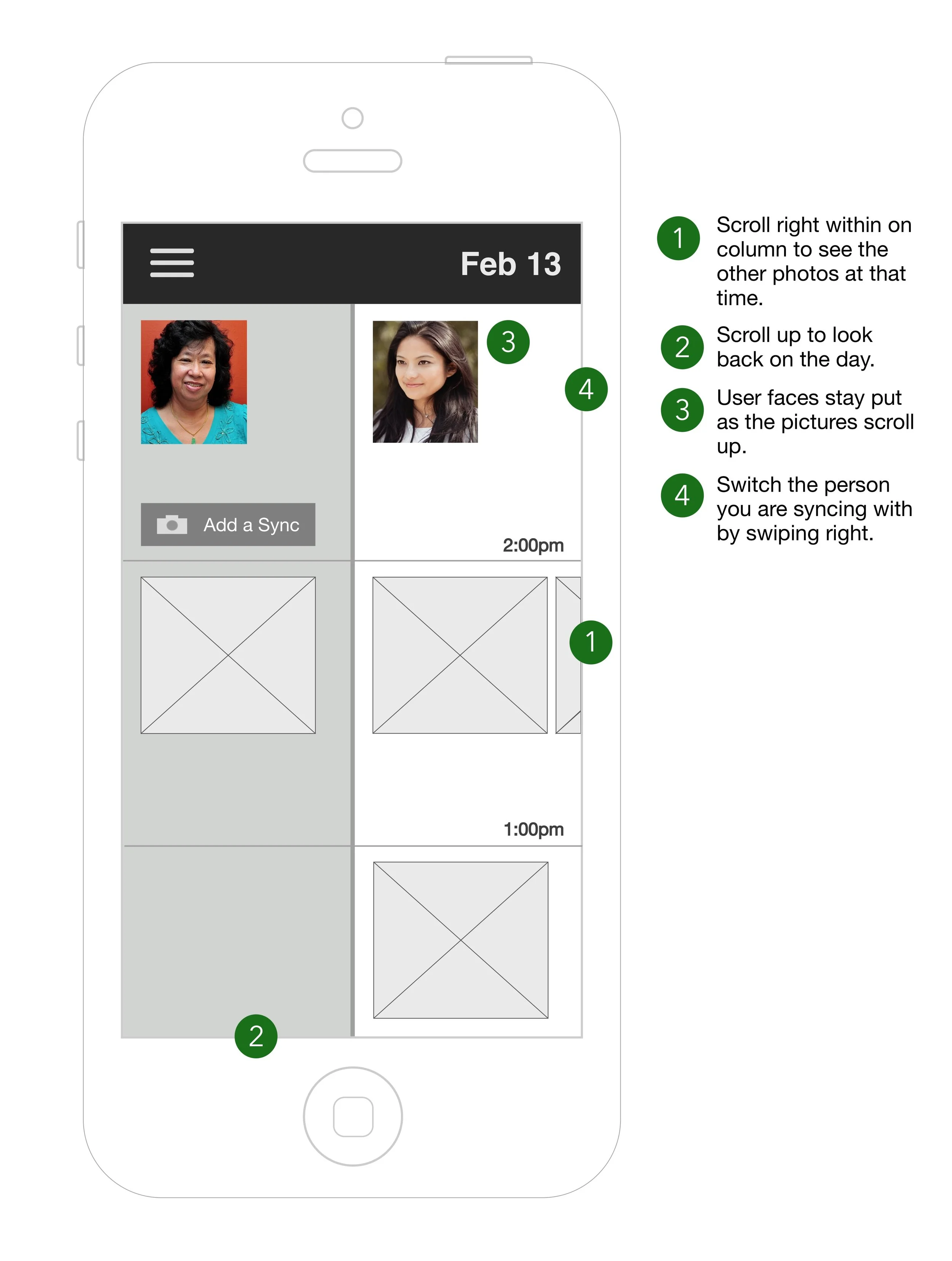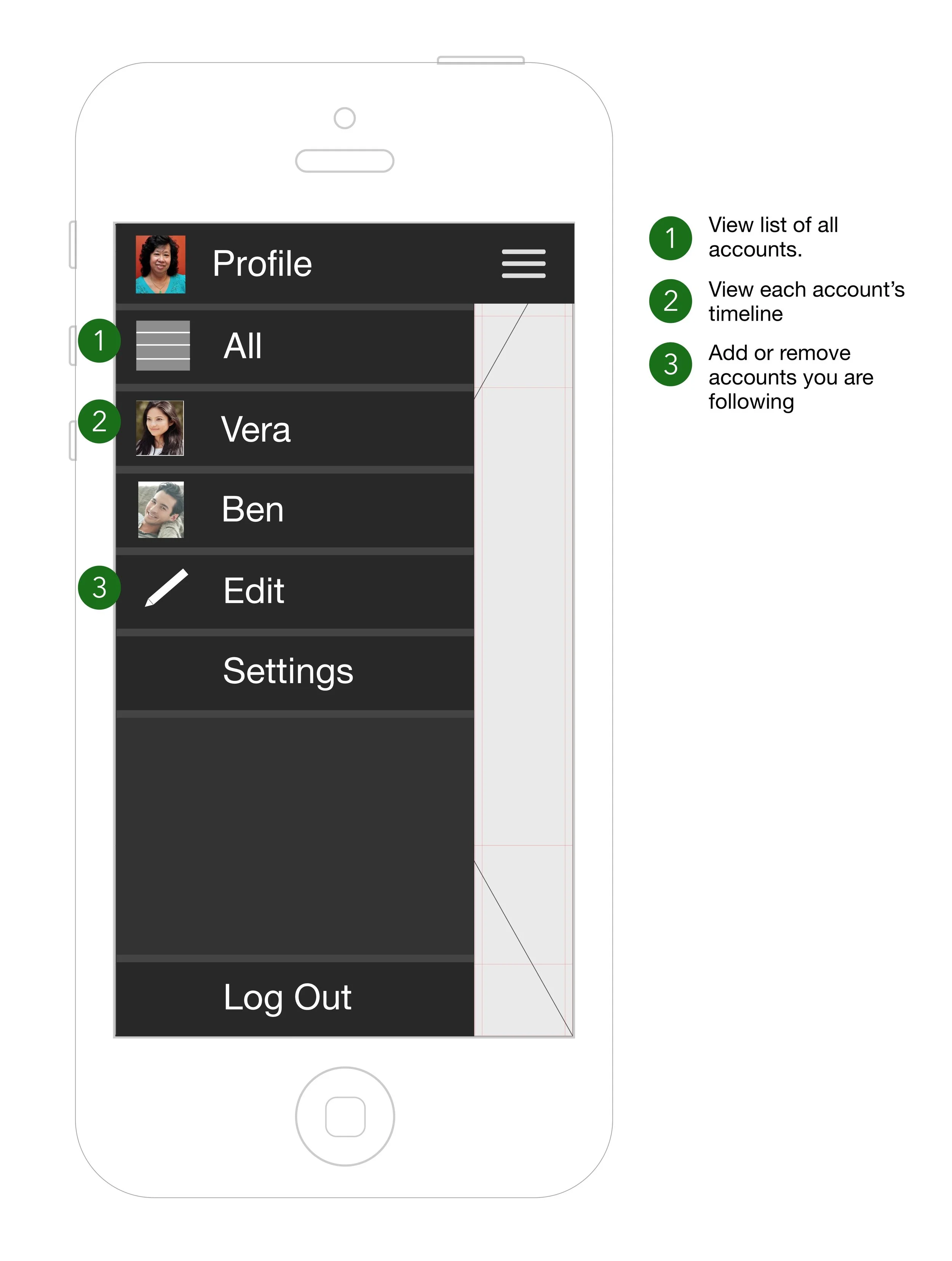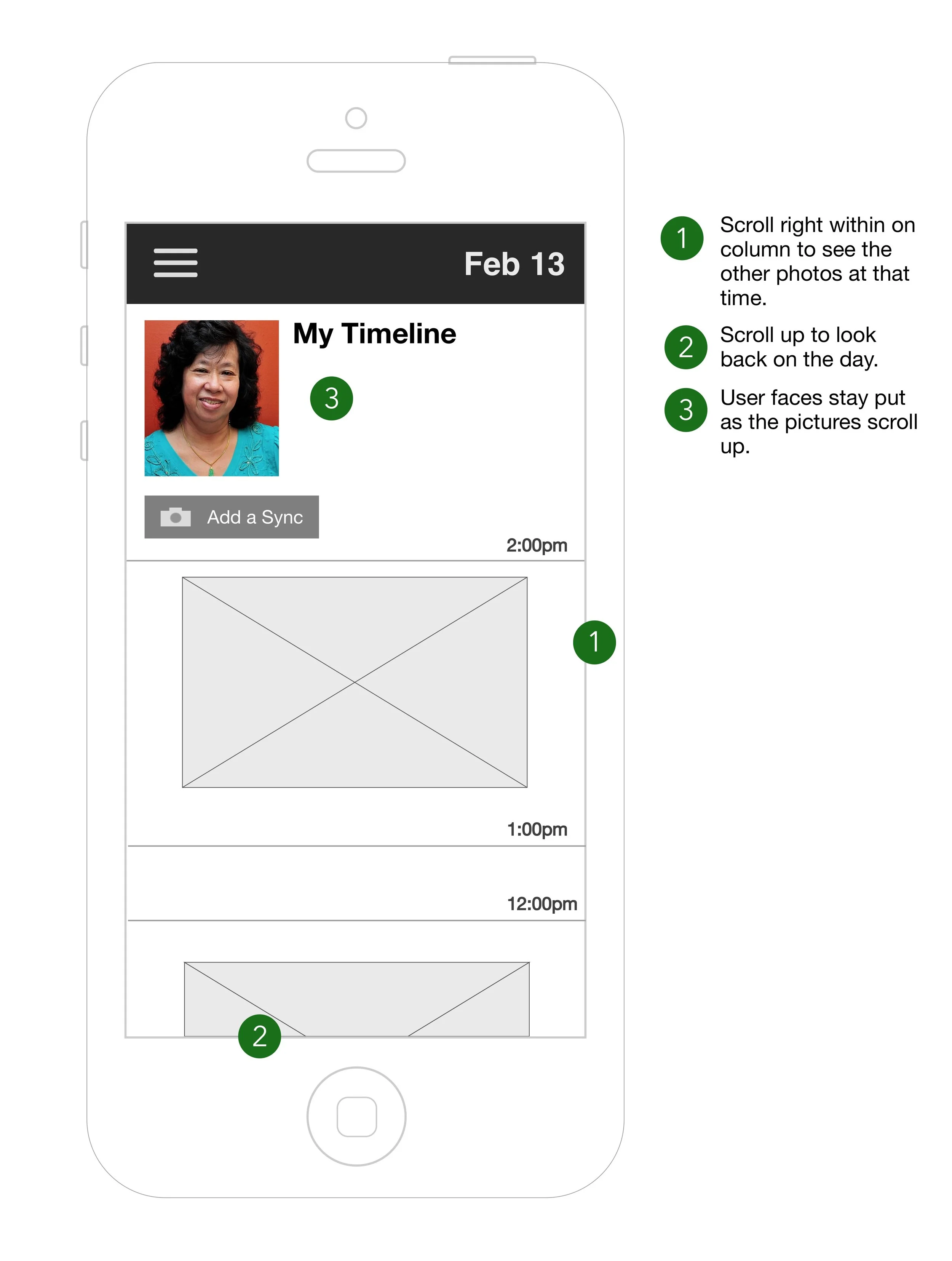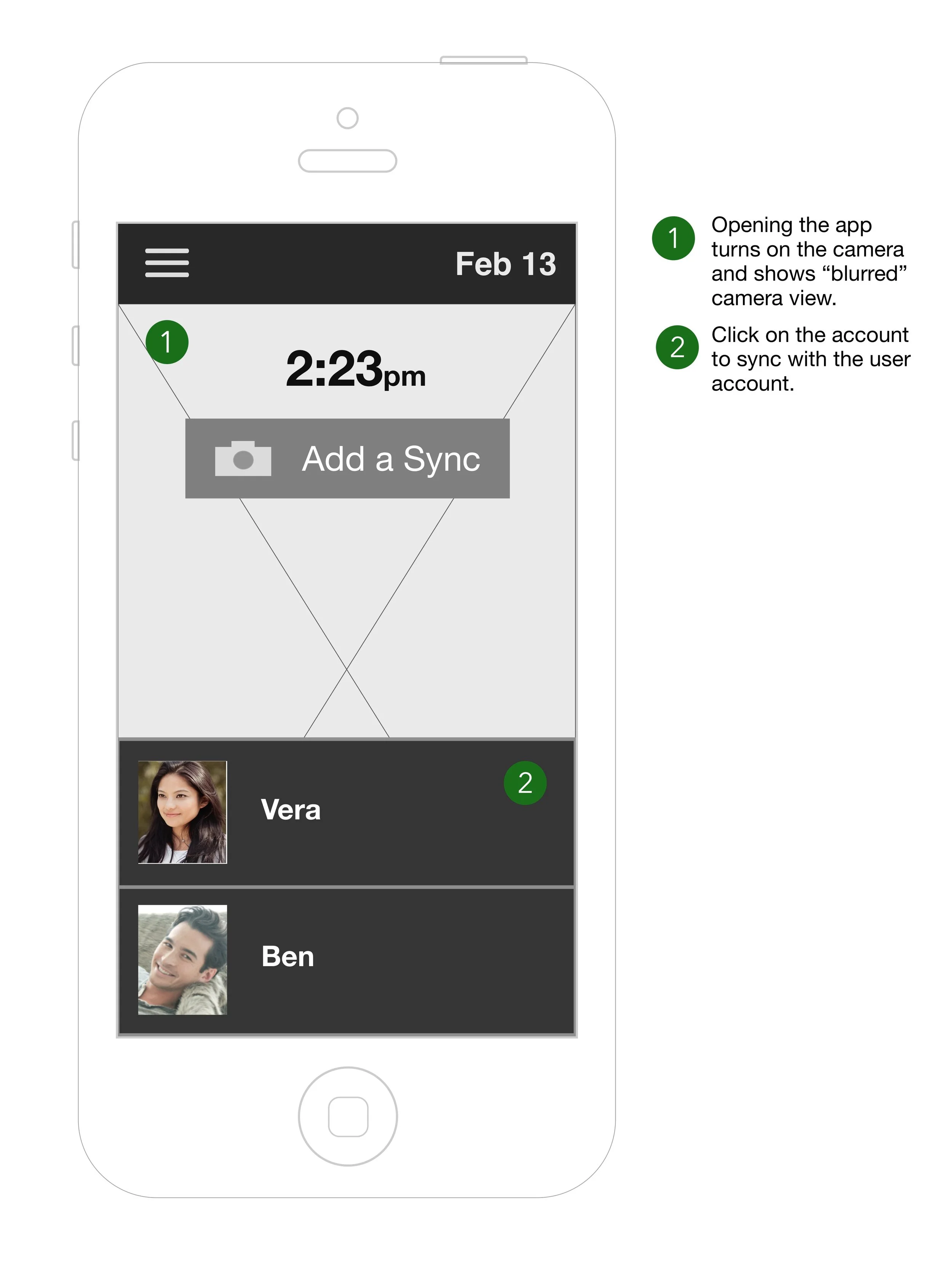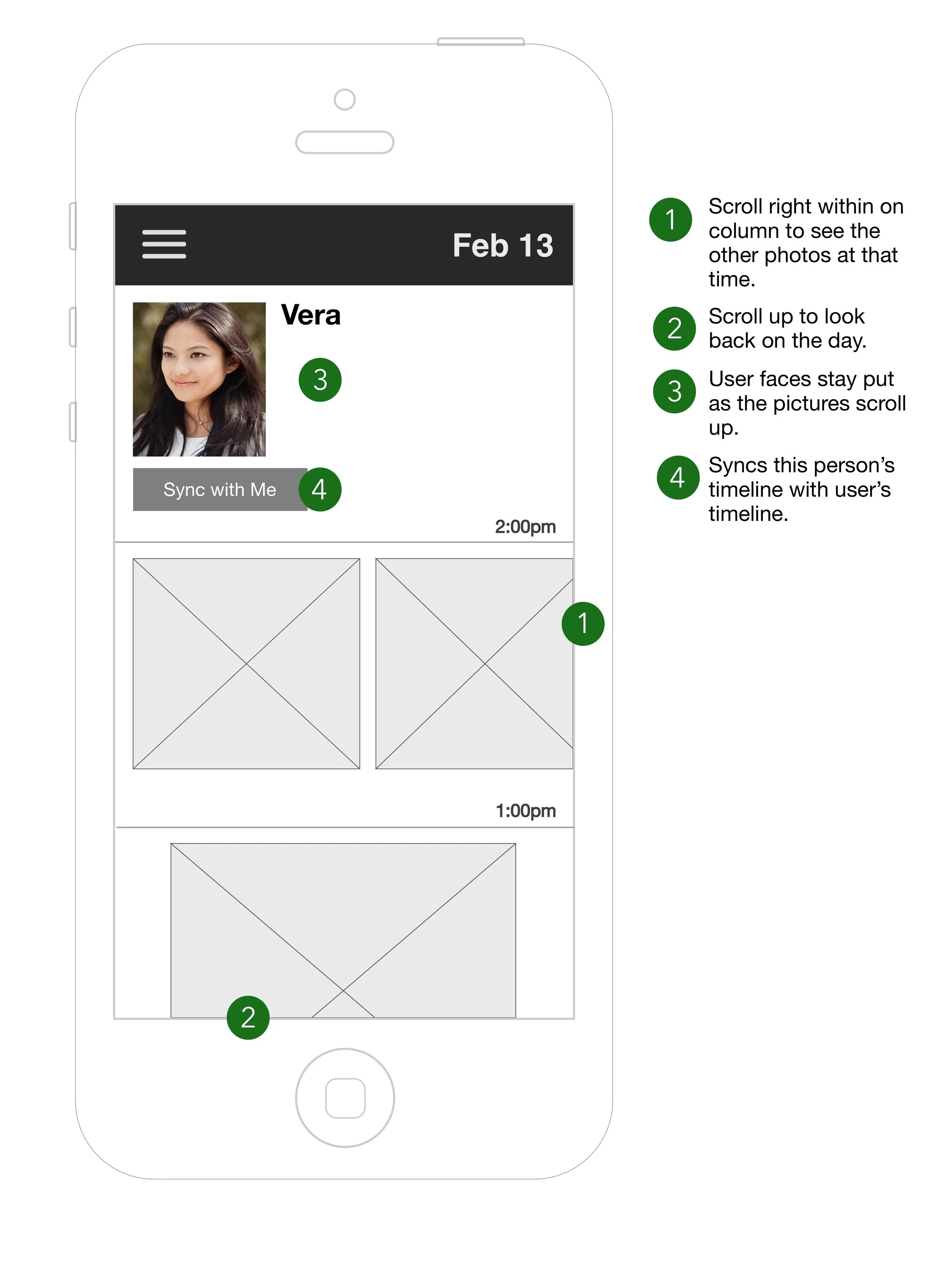Sync
Quick Notes
Background: Adult children and parents who live apart from each other across timezones experience a disconnect.
Objective: Create an app that connects adult children and their parents across timezones.
Role: Designer, User Researcher
Time: 1.5 months
Process:
User Interviews
Personas/Scenarios
Wireframes/Navigational Map
Deliverables:
Wireframes/Navigational Map
Medium Fidelity Prototype
Design Specifications
Sync is an app that connects families across the globe by chronicling and aligning their everyday moments.
Design Process
Gauging the parent-Child relationship
To understand our product space of international adult parent-child relationships, we interviewed five pairs of adult children and their parents separated by time zones. The smallest time difference was between a mother in Hong Kong and her adult son in Singapore. The largest time difference was between a child in the US and a mother in China. We were interested in how they communicated including mode, frequency, challenges, and topic of conversation. In addition, we wanted to find out what they felt like they were missing and how we could make it better.
Overall, we found that parents don't want to be intrusive. They want contextual information about their adult children's life (if they've been eating well and sleeping well) more than events. In general, both children and adults wanted to know the other's schedule, because it's hard to gauge whether the other one is at a meeting or home, especially with the time zone difference. Currently, the preferred method of communication is texting or leaving a message because it's non intrusive and does not need to be checked immediately.
COMING UP WITH A SOLUTION
From our initial interviews, we identified several points that we wanted out app to hit.
- Non-intrusive location presets for common places (work, home, etc) using phone’s GPS capabilities
- System makes decision about mode of communication based on context/schedule information.
- Subtle context clues about timezones, weather, etc,
- Maintain baseline of existing communications methods (e.g. photo sharing, texting, audio texting, video chat)
After brainstorming a couple of ideas, we came up with an app that takes the photo stream, one from a parent and one from a child and matches them up across time zones (for instance, if it would show a picture of the mother's lunch in China, 12 hours ahead next to a picture of the child's lunch in New York).
PERSONA/ScENARIOS
I then created personas for the potential users of our app, one mother and one daughter. These personas and the scenario between them were based on the characteristics, needs, goals, and communication habits seen in our interviews.
wireframes
After making the personas and scenarios, we started sketching out what we thought the app would look like. We spent a good deal of time trying to figure out how our shared photo stream would look. The point of the shared photo stream is to share photos from two different time zones, which we would then line up.
I realized that this could be presented in one of two ways. Either the photo stream would update with new pictures at the top (much like a facebook news feed), which would make more sense if we were focusing on the most current photo, or newer pictures would appear at the bottom while older pictures shifted to the top (a bit more like a calendar application).
The trade off was that the focus of the app would change depending on how I decided to present the photos. I ultimately decided to go with the calendar option (where the newer pictures would appear at the bottom), because we wanted to focus on the reflective experience of seeing someone else's day aligned next to yours.
In addition, I decided to combine photo streams so that all the pictures are mixed in together. Originally, I had arranged the pictures with a division in the center. So in our scenario, all of the mother's pictures would be on the left and all of her children's pictures would be on the right. I decided that this was (1) space inefficient and (2) not natural enough of an experience (by separating the photos, the days seemed also to be separate).
Here are some initial wireframes as to how our app might look.
WHAT OUR APP LOOKS LIKE
All that was left after the wireframes was to make the interface. We came up with a scenario where the mother and the daughter are looking at their synced photo stream over the course of a day on Chinese New Year. We chose Chinese New Year because had just started when we first made our scenario and also it's typically a time where the whole family (nuclear and extended) get together.
Our final prototype is an app that connects family members who are spread out over the world by bringing together their everyday moments. It takes the photos that one family member takes during their day and aligns it with another family member's photos, uniting them visually. This app then populates each individual's content into a shared timeline and also pulls content from other social media platforms. Sync encourages reflection by creating a context for sharing everyday content while, at the same time, creating a natural time buffer between parties by delaying when content is received.





